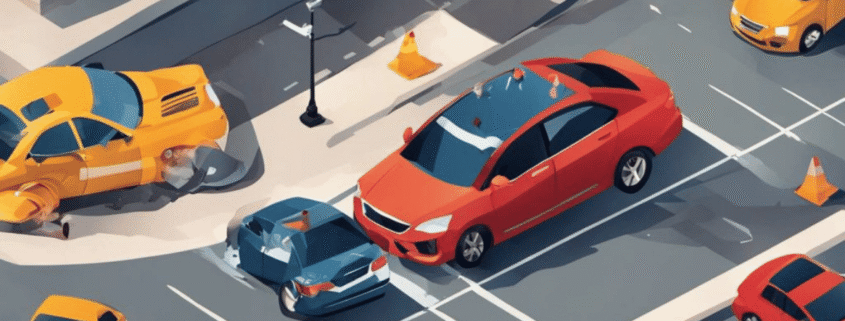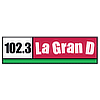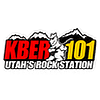Multi-Vehicle Crashes in Utah: Fault, Claims And Settlements
In Utah multi-vehicle crashes, fault is split using comparative negligence. You start with your own PIP for medical bills, then can pursue the at-fault driver if you meet Utah’s injury threshold. Deadlines and evidence matter, so act quickly and get legal help.
Pileups raise tough questions. Who caused it? Who pays? How do you prove your side? In Utah, the rules for fault, no-fault medical coverage, and claim deadlines can shape your outcome. This guide breaks down how fault is assigned in multi-car crashes, what evidence helps most, how insurance works, and what affects settlement value.
If you are comparing options for the best car accident lawyer Utah, you will see why local knowledge and fast action can protect your rights.
Key Things You Should Know
- Utah uses modified comparative fault rules
- Your PIP pays first for medical costs
- You can sue once thresholds are met
- Fault is split across everyone involved
- Chain reactions need careful reconstruction
- Photos and witness statements are crucial
- Black-box data helps in pileups
- Meet reporting and filing deadlines
- Insurance limits can cap recovery
- Local counsel speeds complex claims
Multi-Vehicle Fault Rules In Utah Multi-Vehicle Crashes
How Utah’s fault rules apply
Utah follows modified comparative negligence. Each driver gets a fault percentage. You can only recover if you are less than 50% at fault, and any payout is reduced by your share. In multi-car crashes, investigators may assign portions of fault to several drivers based on speed, following distance, signal use, and reactions. These rules push everyone to prove what really happened, not guess.
Chain reaction basics
A chain reaction often starts with one sudden event. Maybe a lead car brakes for debris and two cars behind collide in sequence. Do not assume the last car is always at fault. Investigators look at spacing, weather, visibility, and whether intermediate drivers had time to stop. Event data recorders and dashcams can show speeds and braking. An experienced Utah car accident attorney will push for fast scene work, vehicle downloads, and witness contact to map the sequence with care.
Why police paperwork is only a start
The officer’s crash report helps insurers start their review, but Utah law limits how that report is used in court. It is a roadmap, not the verdict. You still need photos, video, physical marks on the road, and expert input to prove your version.
Multi-Vehicle Claims, PIP and Settlement Basics In Utah
No-fault medical and when you can step outside
Utah is a no-fault state for medical bills. Your Personal Injury Protection (PIP) pays first, at least up to 3,000 dollars, no matter who caused the crash. You can bring a liability claim against the at-fault driver once your medical costs meet the statutory threshold or if you suffer a serious qualifying injury. This rule matters in multi-car cases because several drivers may share fault.
What can shape settlement value?
There is no single “average” payout for multi-car crashes. Results depend on injury severity, how fault is split, total medical bills, future care, lost income, pain and suffering, and insurance limits for every driver involved. Utah’s 50% bar means your recovery drops to zero if you are at least half at fault. Policy minimums also matter, and Utah’s liability minimums increase for policies issued or renewed after January 1, 2025, which can affect available coverage in newer crashes.
Utah Deadlines, Reports and Next Steps
Report and protect the record
Call at 911 early after any crash with injuries or significant property damage. Utah regulation allows the state to require accident reports in crashes with injury, death, or high property damage. Get medical care, exchange information, and photograph the scene, vehicle positions, and plate numbers. That early record often decides who pays.
Filing windows you cannot miss
Utah’s general deadline to file a personal injury lawsuit from a car crash is four years. Time can be shorter if a government vehicle is involved, and different rules apply to wrongful death and property claims. Do not wait. Consult your attorney early to ensure that evidence is preserved and filed on time.
Practical checklist
- Get medical care and follow doctor advice
- Photograph damage, skid marks, and injuries
- Capture dashcam or nearby camera footage
- Save repair and medical receipts
- Do not post details on social media
- Speak with a lawyer before recorded statements
Get to Know About the Best Utah Car Accident Attorney: Local Help For Complex Pileups
Multi-car crashes move fast. So do insurers. While you rest and focus on care, a strong legal team can secure video, download black-box data, and line up experts before anything disappears. If you want the best car accident lawyer Utah for a complex pileup, look for real trial experience, fast response times, and clear talk about fees and case value.
Ask how they handle multi-defendant claims, how they protect you from low policy limits, and how they pursue underinsured coverage when the at-fault driver’s insurance is not enough. A proven Utah car accident attorney also understands Utah’s no-fault rules and the 50% bar, which can decide your claim. The right fit is a team that explains each step, prepares you for statements and medical exams, and fights for a fair result without delay.
What’s new at Cockayne Law with Chris Cockayne
Chris Cockayne has built a practice that treats each crash like a unique story, not a file number. In multi-vehicle cases, his team at Cockayne Law focuses on early fact work. That means collecting photos, locating witnesses, pulling phone records when needed, and pushing for quick downloads of event data recorders.
They know Utah’s PIP rules and injury thresholds and use them to move claims forward once your medical costs pass the legal marker. They also watch coverage stacks across several drivers to find every potential source of recovery, including uninsured and underinsured motorist benefits when policy limits are too small.
Clients appreciate clear updates, honest timelines, and practical advice about treatment, car repairs, and lost wages. When fault is disputed across three or more drivers, the firm works with accident reconstruction experts to model timing, speeds, and sight lines. If the insurer drags its feet or blames you without proof, Chris is ready to file and present your case.
Final Thoughts
Multi-vehicle crashes are messy. But your plan should be simple. Get care, document everything, and call a skilled Utah car accident attorney early. Utah’s no-fault rules, fault percentages, and deadlines all shape your outcome. Evidence fades fast, and so does video. Do not wait on key steps like vehicle inspections and witness contact.
If you reach the medical threshold, your claim can move beyond PIP and toward a full recovery from the at-fault driver or drivers. With steady guidance and a clear record, you give yourself a fair chance at a strong settlement.
FAQs
Who decides fault in a Utah pileup?
Investigators, insurers, and sometimes the court assign percentages based on evidence like statements, scene photos, skid marks, black-box data, and camera footage. Utah’s comparative negligence rule controls the outcome. If you are less than 50% at fault, you can recover, reduced by your share.
What is Utah’s no-fault rule for medical bills?
Your own Personal Injury Protection pays first for medical costs, usually at least 3,000 dollars, regardless of fault. Once you meet that threshold, or if you suffer a serious listed injury, you can pursue the at-fault driver for the rest of your losses.
How do chain reaction crashes get sorted out?
Each driver’s actions are reviewed in sequence. Spacing, speed, road conditions, and reaction time all matter. Investigators may use reconstruction experts and event data to map who had a fair chance to avoid impact. Fault can be split across several drivers.
Do police crash reports decide my case?
No. The report helps insurers start a claim, but Utah law limits how an officer’s accident report can be used in court. You still need strong independent proof like photos, videos, and expert analysis to win.
What affects settlement amounts in multi-car crashes?
Injury severity, total medical costs, future care, time off work, pain and suffering, how fault is split, and insurance limits across all drivers. Utah’s 50% bar also affects your right to recover. Policy minimums for new policies rise in 2025.
Should I give a recorded statement to the other insurer?
Not before you talk to a lawyer. In multi-car cases, words can be taken out of context. A short, polite decline is fine until you have guidance. Your attorney can share facts later with proper context and documents.
What if the at-fault driver has low limits?
Your lawyer can look for other at-fault drivers, excess coverage, business policies, and your own uninsured or underinsured motorist coverage. They will also watch health liens and bills to increase your net recovery.
Do I need a lawyer if PIP covers my bills?
PIP is a starting point, not the finish line. If your costs exceed 3,000 dollars or your injuries qualify as serious, a claim against the at-fault driver may be possible. A lawyer helps prove fault and protect your payout.









